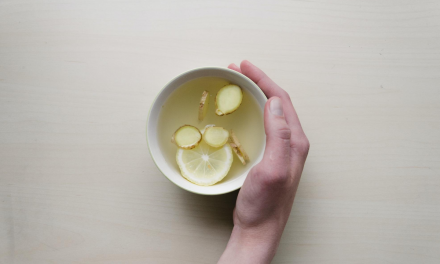The food you consume is regenerating or degenerating your body, mind, emotions, and spirit. Most people do not have a clear understanding of how food is affecting them or which foods are best for overcoming personal health, emotional, and weight imbalances.
The cure for many health maladies is in your kitchen and your ability to transform food into the healthy body and mind that you desire. I’ve had thousands of formerly sick clients who are living proof of this truth. Using food to restore health is not random. Food acts in specific ways in the body and does not affect everyone in the same way. Not everyone benefits equally from the same foods as scientific nutrition would have you believe.
Traditional Healing wisdom has provided an accurate and unique dimension to food analysis for thousands of years. It classifies food and disease according to specific patterns, therapeutic properties, subtle energies, and flavors. With this knowledge it is easy to accurately determine which foods will restore your body to good health and balanced weight; maximize vitality; and establish a clear, focused mind and emotional harmony.
This article will help you understand the specific healing properties of the five flavors all of which are important and include: pungent, salty, sour, bitter, and sweet. This knowledge can help you improve your health, lose weight, create balance, and bring you into harmony with the seasons. You can use the five flavors to eliminate excess fat, cholesterol, salt, toxins; build deficiencies; and regenerate your health.
Cravings for certain foods are often a signal that you need the particular flavor. You don’t need every flavor at every meal. Do have each flavor every day to maintain good health. Most physical and emotional imbalances benefit by emphasizing specific flavors. The same flavors that, in moderation, help reverse certain conditions, can cause discomfort, overweight conditions, and illness when eaten in excess.
Benefits of Pungent Flavor
Pungent flavor clears phlegm and mucous and dries congestion, especially in the respiratory system. Pungents keep the lungs clear and open; improve digestion and circulation; stimulate slow metabolism; improve sluggish liver function; relieve arthritis; help weight loss; and warm and stimulate the body. If you’re feeling sluggish, bloated, puffy, dull, lethargic, or overweight, you will benefit by emphasizing the pungent flavor.
Common Foods with Pungent Flavor
Parsley, scallions, turnips, cabbage, onions, kale, leeks, mustard greens, collard greens, celery, radishes, horseradish, garlic, basil, black pepper, celery seed, cinnamon, cloves, cumin, fennel, mustard seeds, nutmeg, oregano, rosemary, marjoram, spearmint, and turmeric. Use 3 or more of these daily. Roasted Root Vegetable Recipe
Benefits of Salty Flavor
Salt, an important mineral, is vital to human life. Without it, you would die. Too much causes water retention, high blood pressure and kidney and heart problems. The right quality and amount can improve health of the kidneys, urinary tract, adrenals, bones, fluid metabolism, hair, and sex organs. It can improve energy and digestion; build healthy bones and joints; moisten dryness; detoxify poisons from poor quality foods; and enhance mental focus and emotional stability. Salt has the most grounding and centering nature of all the flavors, and is greatly misused. Poor quality salt and too much of it creates the opposite effect.
Symptoms of salt (and other mineral) imbalances include bone problems, anemia, metabolic imbalances, depressed mental activity, weak digestion, gas, bloating, poor circulation, feeling cold, difficulty losing weight, frequent fatigue, arthritic pain in hands, arms, feet, knees, lower back and shoulders, and emotional imbalances from anxiety to extreme fear.
Quality Matters
Most commercial salt is highly refined and contains 99.5% sodium chloride, anti-caking chemicals, potassium iodide, and sugar to stabilize the iodine. Common table salt is refined through heat processing and bleached with chemicals.
Salt labeled sea salt is typically refined and has been stripped of nearly all of its sixty trace minerals. You can buy good quality unrefined sea salt in which sunshine alone has been used to extract it. Some brands include Lima, Muramoto, Malden, Real Salt and Mexican “Si” sea salt. Whole salt from the sea has a mineral profile similar to that of your blood and, when used properly, helps to maintain good health and eliminate cravings.
Get in the habit of using a small pinch of unrefined sea salt in cooking only. Avoid adding salt to the food on your plate. If your food tastes salty you’ve used too much. Chew your food thoroughly and you’ll be satisfied with the flavor of food rather than the added salt. Eliminating processed foods, salty snacks, and commercial salt is important.
Mineral-Rich Alternatives to the Salt Shaker
Sea vegetables have been used for thousands of years for their ability to prevent disease, prolong life, and impart beauty and health. Eating small amounts on a regular basis is a balanced way to include the salty flavor. Sea Vegetables are the most nutrient dense group of foods available. Sea Vegetable Recipes Here
Miso is an extremely nutritious and health-supportive food and a healthy way to include the salty flavor. Miso is a fermented soybean paste made by combining soybeans, a culture, sea salt and various grains, then fermenting for 3 months to 5 years. The longer it is aged, the stronger the taste and effects. Miso soup in restaurants is usually far too salty. If you make your own soup, you control the amount of miso you add which should be ½ – 1 teaspoon per cup of liquid. Many popular cookbooks call for as much as 10x more which will work against your health. Miso Soup recipe.
Read Salt: Friend or Foe for more benefits and information on sea vegetables and miso.
Benefits of Sour Flavor
Sour flavor is astringent, contracting, and cooling. It prevents or reverses abnormal leakage of fluids and energy, and dries and firms tissues. This flavor is useful for urinary dripping; excessive perspiration; hemorrhage; diarrhea; weak, sagging tissues including flaccid skin; hemorrhoids; uterine prolapse; and strengthening weak lungs.
Sour counteracts the effects of rich, greasy food, functioning as a solvent and breaking down fats and protein. It extracts minerals from food for improved digestion and assimilation.
Common Sour Foods include lemon, lime, grapefruit, leeks, sauerkraut, vinegar, pickles, strawberries, tart apples, rhubarb, raspberries, cranberries, pickles, and black and green tea. Aduki beans, blackberries, grapes, huckleberries, mango, and sourdough bread also contain sour properties. Fermented vegetable recipes here
Benefits of Bitter Flavor
Bitter is the most cooling and drying flavor, and is helpful for overweight conditions, high cholesterol and blood pressure, and tension or migraine headaches. Bitter foods reduce excess; drain dampness (edema, mucus); help rid the body of parasites, cleanse the arteries, and have antibiotic and anti-inflammatory properties. They offset stress from alcohol and drugs, and detoxify the liver. Bitters are beneficial for treating bloating, gas, distention, belly fat, water retention, herpes, and a hot temper. Bitter foods help you have a more focused mind.
Bitter foods treat infections and candida yeast overgrowth, fungus, swellings, skin eruptions, abscesses, growths, tumors, cysts, and obesity. They remove mucous and heat in the lungs and are an antidote for hot climates. Many bitter foods enhance immunity.
Bitters include: lettuce, alfalfa sprouts, asparagus, leeks, parsley, arugula, broccoli, celery, escarole, collard greens, kale, dandelion greens, mustard greens, bok choy, kohlrabi, scallions, turnips, watercress, papaya, quinoa and amaranth. Other foods containing bitter flavor are wasabi, rye, unsalted pumpkin seeds, marjoram, oregano, white pepper, and vinegar. Escarole Soup recipe.
Benefits of Sweet Flavor
Sweet Flavor is warming and harmonizing with a slowing, relaxing effect. Sweets are building foods and especially benefit the thin, dry, emaciated person. The sweet flavor activates insulin production by the pancreas. In the form of whole food it activates pancreatic enzymes; soothes aggressive liver emotions such as anger and impatience; and can calm acute liver attacks. Sweet foods moisten dry lungs and slow an overactive heart and mind.
Before you run to the candy bowl, it’s important to understand that there are two classifications for the sweet flavor.
Full Sweets are nourishing, tonifying, strengthening, and satisfying. They include whole, unprocessed grains, especially brown rice, millet, kamut, barley, and spelt; beans, legumes and nuts; beets, parsnips, sweet potatoes, yams, cabbage, carrots, spinach, peas, eggplant, and winter squashes; beef, pork, fish, eggs and chicken. Other full sweets are apricots, cherries, grapes, figs, and dates. Brown rice syrup and barley malt syrup are complex sugars and full sweets. Try my Herbed Sweet Chickpea Stew.
Full sweets help deficient blood sugar levels which can cause dizziness, irritability, and headaches. Balanced blood sugar levels maximize tryptophan sent to the brain. Insomnia, depression and pain problems diminish when full sweets are eaten daily. Full sweets are fuel for muscles, nerves and brain and are the principal source for energy for all bodily functions.
Empty sweets are what most people commonly eat including: fructose, most fruits, fruit juice, honey, maple syrup, whole sugar, and sucrose. All simple sugars are empty sweets. They cause infections, promote yeast and fungus; retard calcium metabolism; promote bone loss and arthritis. They cause a scattered mind, anxiety, worry, restlessness, hair loss, headaches, obesity, irritability, and all blood sugar imbalances. They acidify the blood, destroy B and other vitamins, and deplete mineral reserves. Empty sweets burden the digestive system and food cannot be digested properly. Empty sweets are addicting and lead to disease and unhappiness.
Complex Sugars in whole foods are balanced with minerals and fuel muscles, nerves and brain. The energy you receive from breaking down and assimilating complex sugars from whole grains is steady and constant. Please don’t lump simple sugars and complex sugars together. The simple ones compromise your health while the complex variety is essential for good health.
Determine which flavors you need to emphasize or minimize and create a plan for using the five flavors every day. Soon you’ll notice improvements in your body and mind. Flavors are one criterion for choosing the best foods for you. Other discerning food factors are the thermal nature (whether the food is warming or cooling); building or cleansing qualities; and drying or moistening characteristics. My Holistic Weight Loss Webinar provides comprehensive information on food therapeutics and much more. Even if you’re not trying to lose weight, you’ll benefit from this true Holistic approach to health and nutrition.
There are many popular food plans and no lack of internet advice from thousands of people who lack an understanding of food therapeutics and have little or no professional training. Good marketing sells fads to people who are desperately trying to recover good health and lose weight. Current scientific findings often contradict previous findings by the same experts. A perfect diet that will bring everyone good health does not exist and accepting this fact is a good starting point for achieving balanced health.
Consider some professional guidance for the right nutrition and customized holistic health plan for reversing your health and weight issues, and removing the degenerations that cause them. You can greatly improve every aspect of your physical, mental and emotional health with a customized holistic approach. Schedule a Holistic Health and Nutrition session with Deborah Barr, 35-year Holistic Health and Nutrition Counselor. You’ll be on your way to better health. Sessions can be done by phone, Zoom, Skype, or at Pittsburgh office.
All articles and information on this website are protected under copyright laws and are owned by Deborah Barr, Whole Health Resources. You may use this article in your print or electronic publication at no charge. I ask that you contact me letting me know in what publication you will use my article and when it will be published. You are required to use bio and copyright information at end of each article and mail a copy of the publication or link to online publication to me once published.
If you are in need of additional articles or fresh article ideas, contact me via the contact form. I will be happy to discuss some relevant article topics.





